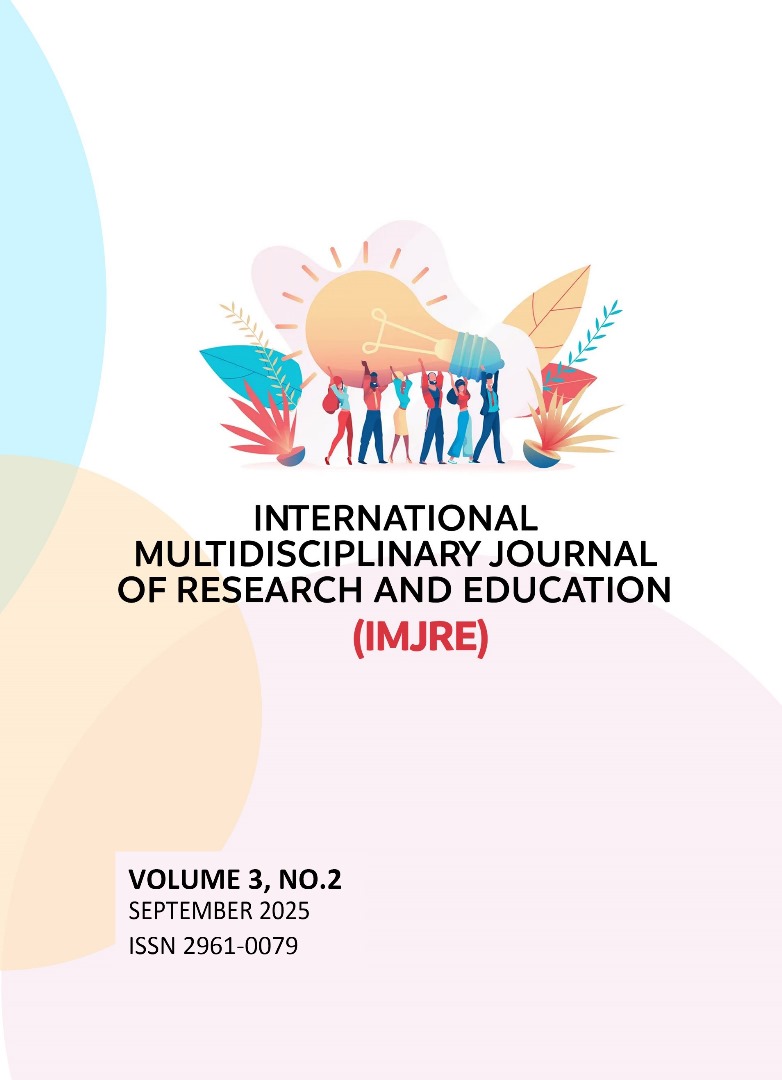TEACHING DANCE THROUGH VIDEO TECHNOLOGY: THE CASE OF SCHOOL OF PERFORMING ARTS DANCE DEPARTMENT LEGON
DOI:
https://doi.org/10.64712/imjre.v3i2.606Keywords:
Dance, Damba Takai, Video Technology, Dance Styles, Movement TechniquesAbstract
In Africa where the acquisition of traditional dance knowledge is essential through life-long participation in activities connected with this art form, the application of video technology to the teaching of dance and its related arts of music, drama and the visual arts, will not only help shorten the learning and teaching processes. It is hoped that this will result in improved methods of preservation and documentation. The quest for higher and quality education has always been paramount on Ghana’s Agenda. The Department of Dance Studies at the University of Ghana and other institutions nationwide with over 50 years of dance education have faced many challenges in attempts to fulfill some educational obligations. The above may be attributed to the complexity of dance as a fleeting phenomenon, which sometimes makes the teaching of this art form a daunting challenge for both teachers and learners. As the combination of video, computers and internet application becomes increasingly useful in many areas of society, the need for its application in various aspects of the arts is becoming increasingly important. With particular focus on the Damba Takai dance from the northern region of Ghana, this paper will examine the use of video technology as an aid to the development of a codification system for the teaching of Ghanaian dances.References
Adinku, O. W. (1994). African Dance Education. Accra: Ghana Universities Press.
Baker, R.S., et al. (2016). Educational data mining and learning analytics. Educational Technology Society.
Bandura, A. (1986). Social foundations of thought and action: A social cognitive theory. Prentice-Hall.
Bergmann, J., & Sams, A. (2012). Flip your classroom: Reach every student in every class every day. International Society for Technology in Education.
Baker, M., & McMahon, T. (2019). Gamification in Dance Education: Strategies for Engagement. Journal of Dance Education, 19(2), 60-68.
Cohen, L., & Smith, J. (2020). The impact of multimedia on dance performance: A new era of storytelling. Dance Research Journal, 52(1), 15-29.
Dale, E. (1969). Audiovisual methods in teaching, third edition. New York: The Dryden Press.
Davis, R., & Dyer, A. (2020). Virtual reality in dance education: exploring new dimensions of learning. International Journal of Dance Education, 18(3), 112-125.
Felder, R. M., & & Silverman, L. K. (1998). Learning and teaching styles in engineering education. Engineering Education, 78(7), 674-681.
Ferguson, K., & Gunter, R. (2020). Adaptive technologies in dance: Creating inclusive learning environments. Dance Education Research Journal, 5(1), 45-59.
Graham, S., & O’Connor, L. (2018). Digital resources in dance education: A review of current practices. Research in Dance Education, 19(4), 345-358.
Hew, K. F., & Cheung, W. S. (2014). Students’ and instructors’ use of massive open online courses (MOOCs): Motivations and challenges. Educational Research Review, 12, 45-58. https://doi.org/10.1016/j.edurev.2014.05.001
Harris, P., & Ralston, E. (2019). Choreographic software: Innovations in dance composition. Journal of Choreography Studies, 12(2), 78-89.
Khan Academy. (n.d.). About Khan Academy. Retrived October 23,2023, from https://www.khanacademy.org/about
Kizilcec, R.F., et al. (2017). Completion intention in massive open online courses. Journal of Learning Analytics.
Kassing, G., Jay, D. (2003). Dance teaching methods and curriculum design. Human Kinetics.
Mayer, R. E. (2014). The Cambridge handbook of multimedia learning (2nd ed.). Cambridge University Press.
O’Flaherty, J., & Phillips, C. (2015). The flipped classroom: A survey of the research. The Internet and Higher Education.
Opoku, A. M. (1964). Thoughts from the School of Music and Drama, Institute of African Studies, University of Ghana, Legon. Okyeame, 2(1), 51-56
Paivio, A. (1971). Imagery and verbal processes. New York: Holt, Rinehart & Winston.
Piaget, J. (1950). The psychology of intelligence. Routledge.
Royce, A.P. (1982). The anthropology of dance, Bloomington and London: Indiana, (reprinted 2000, with new introductory chapter by DanceBooks, Ltd.)
Ryburn, W. M. (1975). The Principles of Teaching. Bombay: (Osford University Press, p.24-25)
Rogers, J., & Kauffman, J. (2021). Adapting dance education during Covid-19: Lessons learned from remote learning experiences. Journal of Arts Education Research, 10(3), 221-234.
Sullivan, M., & O’Reilly, T. (2021). Social Media as a Tool for Community Building in Dance Education. Dance Education Journal, 15(2), 34-41.
Vygotsky, L. S. (1978). Mind in society: The development of higher psychological processes. Harvard University Press.
Web Sources
Eberly Centre for Teaching Excellence (Office of Technology Education) http://www.cmu.edu/teaching/principles/learning.html
Lacan concept of mirror stage: http://www.lacanonline.com/index/2010/09/what-does-lacan-say-about-the-mirror-stage-part-i/
Rick Williams, Art Work in Education: http://www.aweoregon.org/research_theory.html
http://www.danc_2010_fusillol_0805 sylabi.pdf)
http:// www.uncg.edu/dce/syllabi/dce231 02.pdf
http://www.pwilson@ischoo.com.utexas.edu
http://www.videomaker.com/article/9128/
http://nextgen.ug.edu.gh/index.php?module=splashscreen
Robert W. Nicholls is a media specialist with the Howard University Research and Training Center in Washington, D.C. http://www.worldandi.com/specialreport/1988/october/Sa14871.htm
Mark Turin and Imogen Gunn Definition: http://www.archivalplatform.org/blog/entry/world_project/
Personal Interviews
Zablong Zakariah Abdallah, Institute of African Studies. 12 August 2010
Chief Drummer, Fuseini Issaliku. 19th January 2011
Chief of Tamale Dakpema, 20th January 2011
Tamale sub chief, Dakpem Daboglana Abukari Kaleem. 21st January 2011




